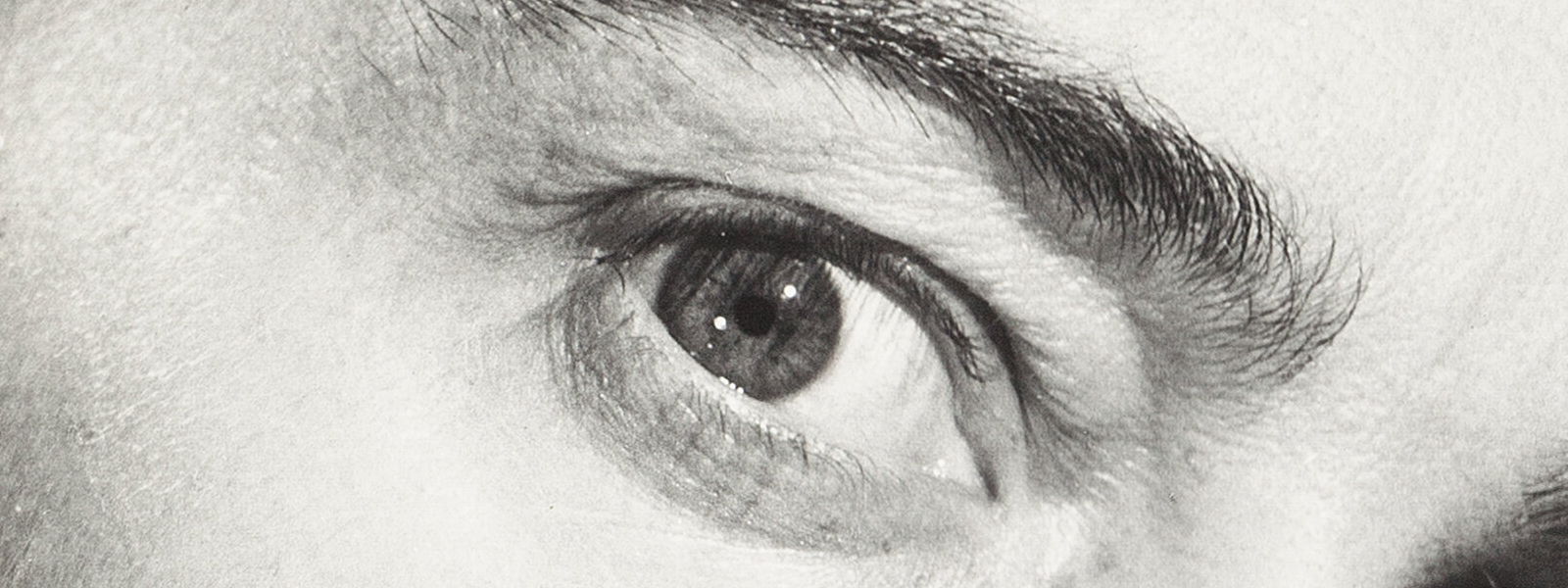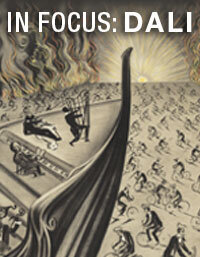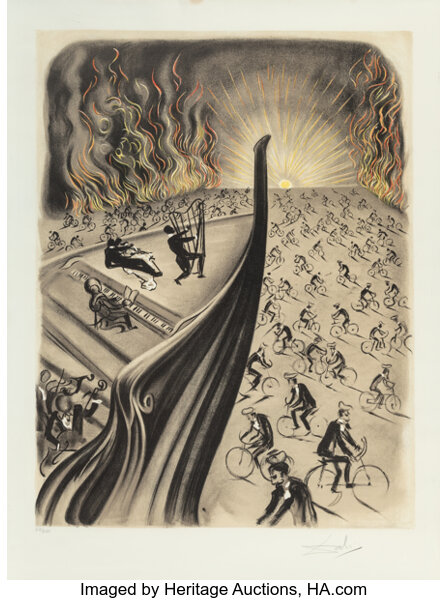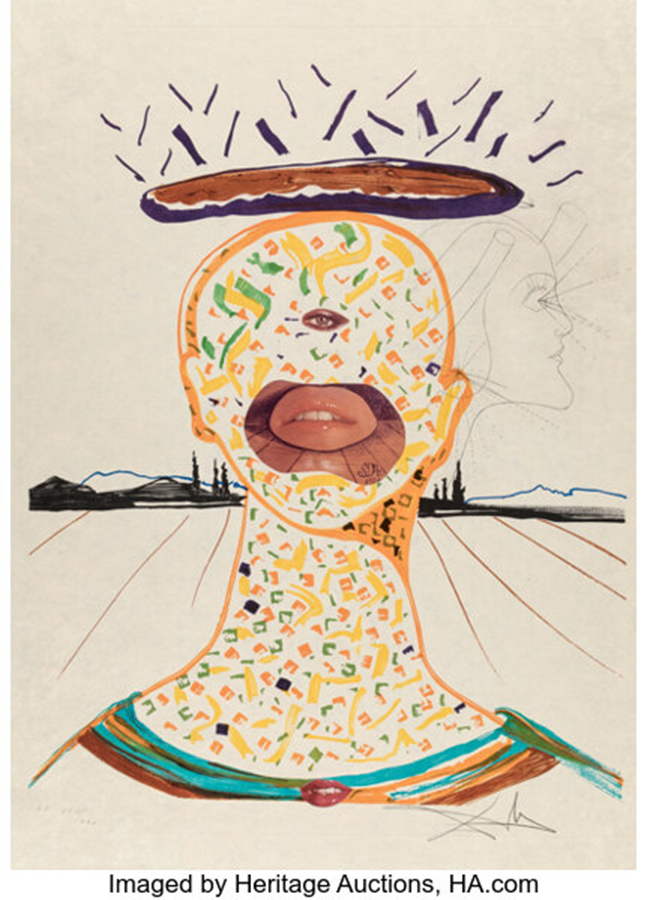DON’T LET THE ARTIST’S ODDBALL PERSONA FOOL YOU — HE WAS ONE OF THE GREATS
By Christina Rees
It wasn’t so long ago that artists could be as known for their personal eccentricities as they were their art: famously disturbed Van Gogh, ravenous Picasso, spiky Kahlo and withholding Warhol, for starters. But perhaps the most colorful of all is Salvador Dalí, whose persona and artwork blurred the lines between genius and madness, calculation and chaos.
What sometimes gets lost in our conversations about Dalí’s larger-than-life personality and prodigious output is his sheer talent. Because Dalí jumped at opportunities to self-promote, including publicity stunts like driving a Rolls-Royce stuffed full of cauliflower and giving a lecture in a diving helmet to the point of suffocation (not to mention his hallmark gravity-defying ’stache and gold-topped walking stick), casual art observers may wave away the work of the man who created some of the most indelible images in modern art. And that’s a mistake.
Spend enough time with Dalí’s works, especially in person, and casual dismissal morphs into admiration and genuine pleasure: The man was an exceptional draftsman and exacting painter whose primary influences combined Vermeer’s precision and rigor with the ineffable qualities of the dream world. And even from his early days, he translated his unique sensibilities to works on paper. Dalí, as a counter to his painting, loved collage, printmaking, watercolor and photography for their informality and accessibility. And with printmaking, he could really play – and make money while doing it.
In fact, of all the artists, writers and thinkers who delved into the unconscious and Surrealism – including post-Dada Magritte, Breton, Duchamp, Man Ray and other 20th-century pioneers – Dalí’s imagery remains the most reproduced and widely recognizable. The task of making Surrealism appealing to the masses was no small feat for any artist (and maybe not the point for a number of them). Sigmund Freud was the patron saint of a dense and heady movement he didn’t ask for but that exploded in Europe after the first world war as a riposte to that collective trauma; Surrealism reveled in discomfort and transgression as it explored the vastness of the unconscious mind. Art had rarely hit these unnerving depths before, and the general public struggled to recognize it as art at all.
IN FOCUS: DALI SHOWCASE AUCTION 11203
March 22, 2023
Online: HA.com/11203a
INQUIRIES
Rebecca Van Norman
214.409.1772
RebeccaV@HA.com
Yet Dalí’s surprising juxtapositions, his revolutionary and contradictory visions, broke through tradition-bound status quo with impressive élan and assurance, to the extent that even today college students decorate their dorm rooms and apartments with posters of The Persistence of Memory and The Temptation of St. Anthony. There’s just something too resonant in his melting clocks and elephants on stilted legs walking through the clouds. Dalí’s bizarre visions are undeniable – perhaps because they’re so beautifully articulated, but also because his instinct about the unconstrained flow of the unconscious rings true to us. Dalí the printmaker would have loved seeing his works reproduced ad infinitum: He was his own favorite artist.
Real prints by Dalí, his official editioned works, are collector favorites the world over. The works on paper he created prior to 1980 (which is loosely considered the cutoff of his mental and physical agency; he died in 1989 at age 84) circulate among serious collectors, galleries, auction houses and institutions, and Heritage Auctions has a committed relationship with the artist’s output: Twice a year Heritage presents a Dalí-centric auction populated by the artist’s editioned works (the March 22 In Focus: Dalí Showcase Auction is Heritage’s fourth). The world-renowned Dalí expert Bruce Hochman is behind much of Heritage’s authentication process. The works offered by Heritage meet the criteria for the print and Dalí collector market: The artist intended the work to be made as a print, personally supervised the process and signed the work. The March 22 Dalí event boasts selections from some of his most sought-after editions.
The image that fronts Heritage’s catalog for the auction is titled Symphony bicyclette – a lithograph created by Dalí in 1970 in tribute to his pal Harpo Marx and Harpo’s also-famous brothers. They’re characters in the fiery (and pretty damn fun) scene awash in wheels and musicians in action: It carries the buzzy humor of both a great Marx Brothers outing and the absurd surreality of Dalí’s brain-space. Verifiable or not, legend has it that Dalí once gifted Harpo a harp strung with barbed wire, and Harpo answered by sending Dalí a photo of his own bandaged hands. An ecstatic harpist crowns Symphony bicyclette, and he plays for his life at the prow of a ship sailing on a sea of cyclists. Heritage is selling No. 26 in the edition run of 200; the print is signed and numbered in pencil along its lower edge.
Enlarge
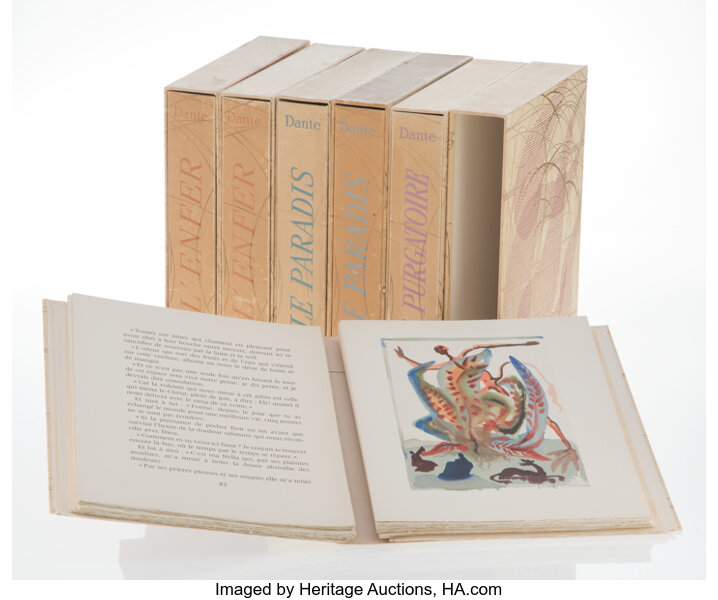
Another highlight of the event is a complete portfolio of 100 woodcuts for Dalí’s La Divine Comédie, produced in 1959-1964. The Italian government commissioned the artist to illustrate Dante’s masterpiece The Divine Comedy to commemorate the 700th anniversary of the author’s birth. The story, of course, recounts Dante’s journey through Hell, Purgatory and Paradise. “It was very fitting that one of the leading artists in the Surrealist movement would be chosen to interpret the bizarre punishments of Inferno and Purgatorio and the fantastical images of Paradiso that Dante created,” writes Rebecca Van Norman, Heritage’s Consignment Director for Prints & Multiples. “Dalí initially created all 100 cantos of the poem as watercolors, and they were then published as wood engravings. The suite contains incredible imagery ranging from the grotesque to the sublime.”
The properly bound and boxed edition is graded 8/10 and was published by Editions d’Art Les Heures Claires, Paris.
In 1971, Dalí appeared on The Dick Cavett Show to discuss his life, philosophy and art with his bemused host. During the interview, the images Cavett flashed on the screen of Dalí’s most recent working images became the content for his print portfolio Imaginations and Objects of the Future, produced in 1975-76 and comprising 10 drypoint etchings combined with lithography, screenprint and collage. This is one of the most acclaimed works of Dalí’s later career; at the time Dalí was feeling his mortality and legacy and exploring ideas around invention and rebirth, biology and technology. In the Cavett interview, Dalí explains that his most pertinent imagery comes to him in that odd state that sets in a few moments before sleep, when one’s subconscious takes over and rearranges meaning, and this portfolio epitomizes that rich and relatable experience. Here there are mind-bending self-portraits and landscapes, references to classical literature and art, botany and religious motifs – and a lobster telephone. It could not be more Salvador. Heritage is offering the complete portfolio, with each etching signed in pencil and annotated, in its April 18 Prints & Multiples Signature® Auction. It was published by Merrill Chase, Chicago and printed by Rigal and Desjobert, Paris.
These are just a handful of the editioned Dalí works Heritage is presenting in upcoming auctions, and like any one work from the artist’s imagination, they reveal only a fraction of his complexity, humor and talent. Heritage bidders can look forward to more In Focus: Dalí events as the artist continues to confound, fascinate and inspire an enviably wide audience and a dedicated collector base.
 CHRISTINA REES is a staff writer at Intelligent Collector.
CHRISTINA REES is a staff writer at Intelligent Collector.

